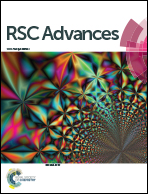Formation of polysaccharide aerogels in ethanol
Abstract
Aerogels are outstanding materials, obtained by the sol–gel process. The production of polysaccharide aerogels is however time-consuming and their use for life-science applications is limited. To accelerate the production time, ethanol was used to induce the gelation of pectin, alginate, xanthan and guar gum. Polysaccharide aerogels were produced by dissolution in water, gelation in ethanol and supercritical drying. Only ethanol was used for the gelation without the use of any other cross-linking agent. In addition there was no solvent-exchange step prior to supercritical drying since the gelation occurred directly in ethanol. Differential scanning calorimetry was used to analyze the decompositions of the samples and also to measure their thermal conductivities. SEM and rheological analyses were performed in order to characterize the new materials. The prepared dry materials were highly porous and possessed some outstanding properties, namely, the low-methoxyl and high-methoxyl pectin monolithic aerogels possessed the highest surface areas yet reported, 510 m2 g−1 and 390 m2 g−1, respectively. To our knowledge this is the first known report regarding synthesis and characterization of pure xanthan and guar aerogels. Their surface areas were also high, 370 m2 g−1 and 110 m2 g−1, respectively. Very low thermal conductivity was observed for pectin aerogels, 0.021 W m−1 K−1.


 Please wait while we load your content...
Please wait while we load your content...